Media | Articles
1980 Toyota Cressida: Baby Brougham
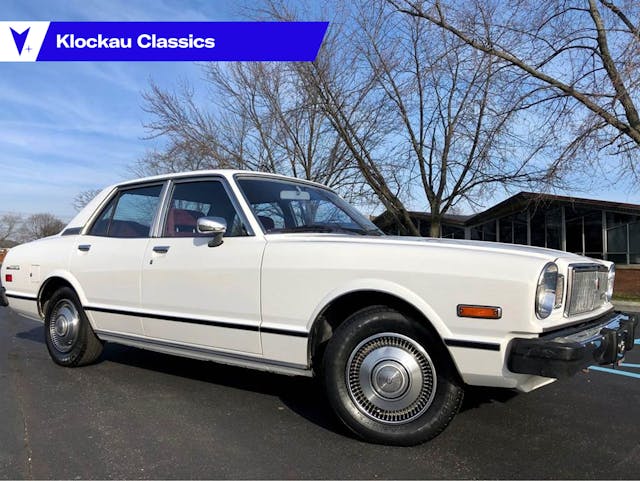
Toyota was really coming into its own in the mid-to-late 1970s. Despite starting out in the U.S. market with a frumpy, unpopular mini-1954 Plymouth in the 1958 Toyopet, the company stuck to its guns and kept developing its lineup. Its efforts paid off with the perfect storm of U.S. federal regulations, the 1973 gas crisis, and growing discontent with indifferently assembled Big Three rolling stock.
While the Corolla and Corona were doing well by the mid-’70s—even in the Midwest, the toughest nut to crack—the top-of-the-line Mark II had become a relative sales laggard by 1974–75. However, Toyota had a new flagship waiting in the wings: The Avalon’s granddaddy, the Cressida.

The last year for the Mark II was 1976, and towards the end of that year, Toyota launched its Cressida replacement. Still the best Toyota you could get in the U.S., it followed American automotive tastes, to an extent, with squared-off, formal styling that was right in tune with that of The Brougham Era. I’ve always thought it looked like a baby Chrysler Cordoba from the front. While JDM-market versions were marketed under both the Mark II and Cressida nameplates, all North American-bound examples were badged as Cressidas—a very luxe, broughamy name, and one right in tune with the times.

Although U.S. versions came only in sedan and wagon body styles, the Cressida, like the Mark II, was also built as a two-door hardtop. One of the fun things about researching my columns is learning new things. For years, I had no idea a hardtop Cressida existed. Rather nice-looking, don’t you think? Kind of reminds me of a contemporary Granada/Monarch, but with a swoopier roofline.
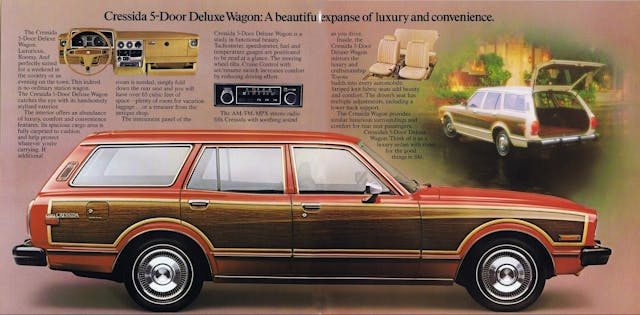
Like the outgoing Mark II, the Cressida came as a wagon, but unlike its predecessor, it came with Di-Noc wood-wallpapered sides—a must for suburbia in the mid-to-late-1970s. Although it seems like every one of these came in that ubiquitous metallic root-beer brown, other colors were, in fact, available.
Marketplace
Buy and sell classics with confidence
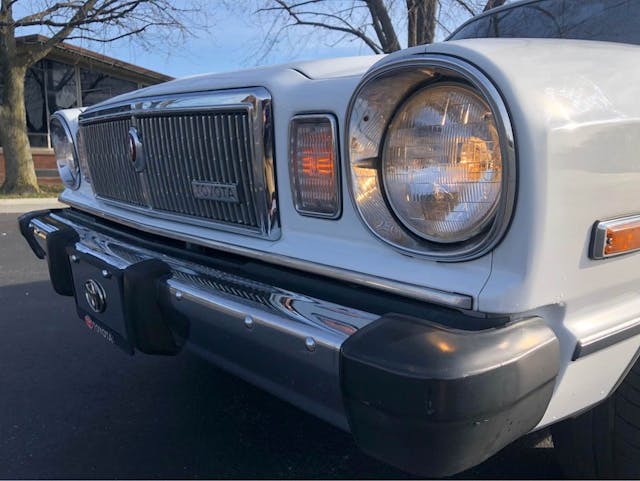
And how about that grille? The earlier Corona Mark II/Mark II was rather sporty looking, but that image was completely ditched with the Cressida. Instead, you got a baby brougham look, with that formal, Cordoba-inspired front end.
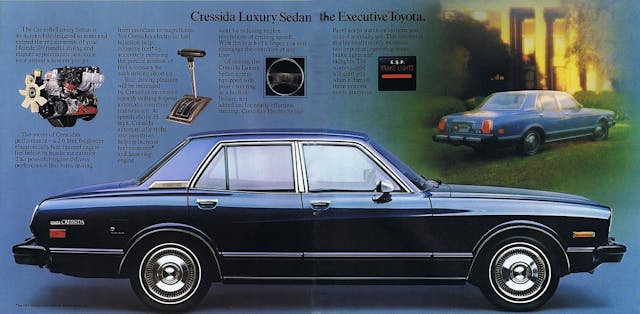
The new Cressida was, despite its obvious luxury aspirations, a rather tidy package, with a 104.1-inch wheelbase and 185-inch overall length (the station wagon measured 184.4 inches long). And unlike the broughamtastic domestic offerings, the Cressidas were pretty easy on fuel: 27 mpg highway and 20 mpg city, according to the 1978 full-line catalog.

All Cressidas came with a fuel-injected, 2.6-liter, six-cylinder engine. Power was 110 hp at 4800 rpm, with 136 lb-ft of torque at 2400 rpm. As the luxury Toyota, standard equipment included cruise control, power steering, power front disc/rear drum brakes, and an AM/FM stereo. An eight-track tape player was optional.
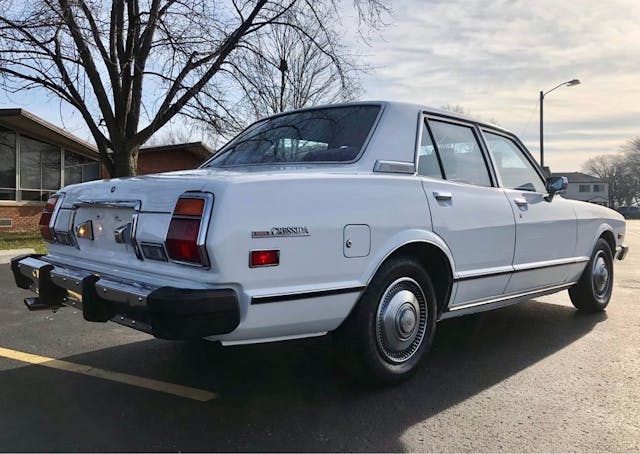
Actually, Toyota had the woody wagon market covered, as the Corolla, Corona, and Cressida all could be had in wood-grained versions for those with Country Squire tastes. Although its less-prestigious Corona sibling looked similar, the Cressida was longer and wider, and sported six cylinders under the hood instead of the Corona’s four.
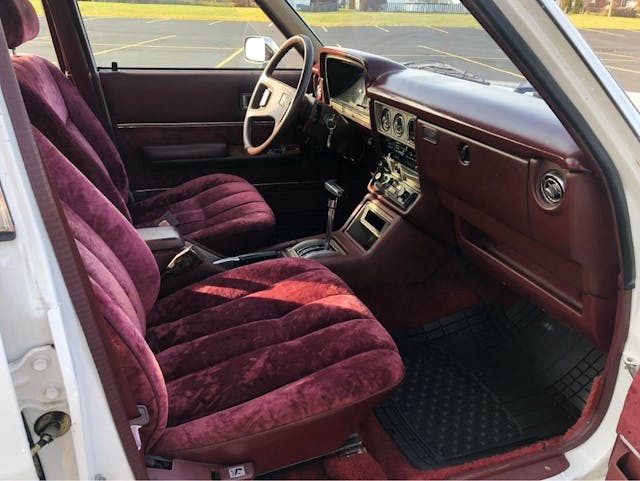
The premium Toyota was also automatic-only: a four-speed unit with overdrive. Sedans had standard automatic temperature control, power windows, power door locks, and crushed velour upholstery. Wagons got easier-wearing striped fabric and manual A/C.

While very much a mini-North American brougham outside, the interior was closer to contemporary-Asian/European style (despite the rampant velour), with its sturdy, ergonomically-designed bucket seats, center console, and floor-shifted automatic. Nor would you see a mere strip speedometer and gas gauge—the Cressida included a tachometer and resettable trip odometer.
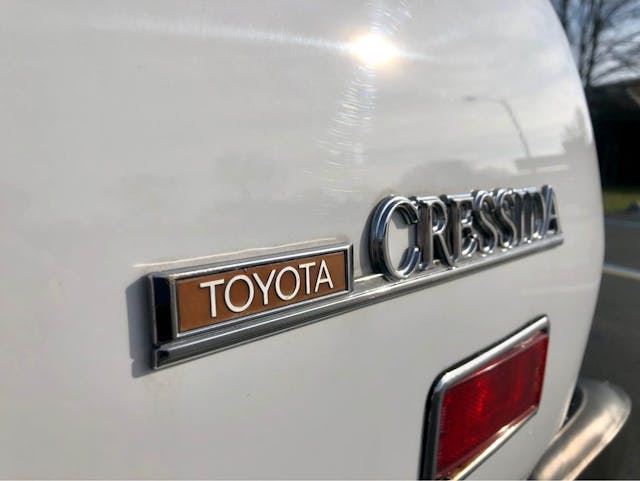
Partly due to exchange rates, but also to its place in the Toyota lineup, the Cressidas—sedan and wagon alike—were quite well equipped. As the brochure stated: “All these features may be extra on other cars. But on Cressida, they’re extras you don’t pay for.” Notwithstanding the rust issues common to ’70s Asian cars, these cars were built with very high quality.
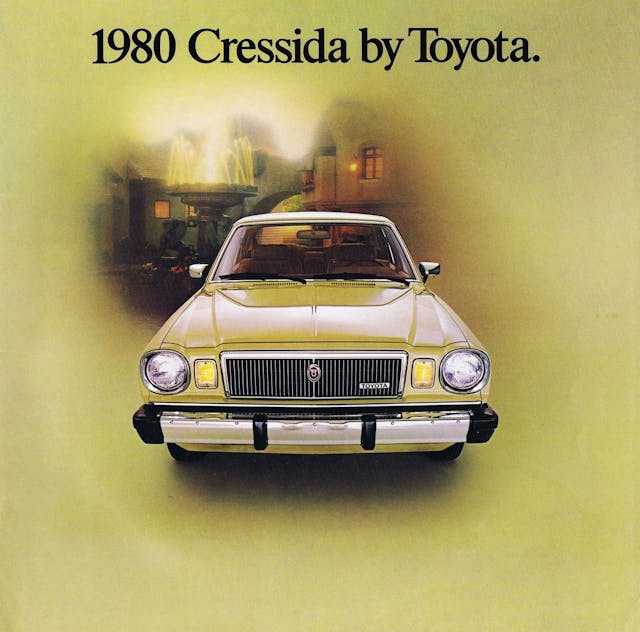
If you lived in unsalted areas of the U.S., they could possibly last forever as long as they were maintained. As period Toyota advertising stated (well in advance of Lee Iacocca’s K-car commercials), “If you can find a better-built car than a Toyota, buy it.” Many did, and still do.

I spotted this model on a Marketplace ad some time ago. It was in Eastpointe, Michigan, with a claimed 51,000 miles and asking price of $18,500. As the ad stated: “80 Cressida in incredible condition with only 51K actual miles. Drives well. Extremely solid classic. Dare I say it might be one of the nicest out there. There’s none for sale anywhere. A couple mid-’80s square headlight Cressidas in the $14K to $24K range, so this is priced fair (Hmm …). If you think price is high, show me a nicer one for less … Probably won’t happen.”
You’d think for that amount he’d throw in a set of new whitewalls.

I remember these from when I was a kid, but in the salty Midwest, most of them had dissolved by 1990. I especially love that broughamtastic burgundy velour—such a period piece! This Cressida generation carried on until 1980, the year of our featured example. For 1981, a more modern, Mercedes-inspired Cressida took its place. The Cressida itself survived through 1991, by which point it was eliminated due to Lexus essentially making it redundant. As for me, I still think it’s significant.
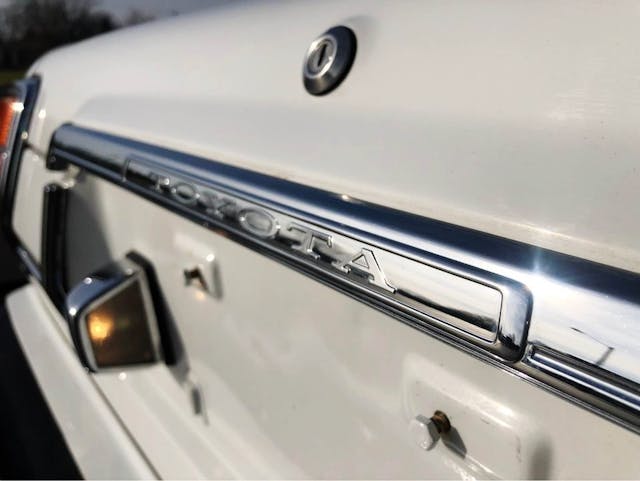

























I currently have a 1980 toyota cressida in good condition. 71,000 miles..Needs minor repair. New radiator & tune up1. done March 2024. Looking for 5,000 or obo. I can be reached @aunty.og on Instagram direct message. Serious inquiries only. Will have photos avail.